18 Weird and Wonderful Turtle & Tortoise Species
"Turtles & tortoises are known for their slow pace, agreeable faces, & shells. They are distributed across every continent except Antarctica, from South Asia to Canada, & there are approximately 356 species of turtles, including 49 species of tortoises (i.e., turtles that live on land as well as water & have more rounded, domed shells). Although many turtle species look similar, they differ in both aesthetic & behavior...
Here are 18 of the most fascinating turtle species in the world.
African Helmeted Turtle
The African helmeted turtle (Pelomedusa subrufa), also known as the marsh terrapin, is prevalent throughout Sub-Saharan Africa & Yemen. While its shell can vary from black to tan, it has distinctly wide eyes & a mouth that appears to be perpetually smiling. However, don't be fooled by its friendly demeanor: The African helmeted turtle is omnivorous & will eat almost anything, including carrion...
Mata Mata Turtle
The mata mata (Chelus fimbriatus) is perfectly camouflaged for its preferred habitat of slow-moving streams, stagnate pools, & marshes. With a carapace (hard upper shell) that looks like bark & a head & neck that resemble fallen leaves, this South American turtle is more capable of blending in with its surroundings, ready to sneakily suck up any fish that crosses its path. It has a particularly long & pointy snout that it uses like a snorkel, sticking it just out of the water to breathe.
Red-Bellied Short-Necked Turtle
The red-bellied short-necked turtle (Emydura subglobosa) has been nicknamed the painted terrapin because it has a bright-red belly when it's young, then the vivid hue fades to orange or yellow as it ages. Native to tropical Australia & New Guinea, it grows to be about 10 inches long & is popular as a pet.
Spiny Softshell Turtle
The spiny softshell turtle (Apalone spinifera) is one of the largest freshwater turtles found in North America — females can grow a carapace of up to 19 inches long. Found from Canada to Mexico, these turtles can live to be 50 years old & don't reach sexual maturity until 8 to 10 years of age. The species gets its name from the small spines that project from the upper front portion of its carapace, making it look even more like its late dinosaur relatives.
Roti Island Snake-Necked Turtle
The Roti Island snake-necked turtle (Chelodina mccordi) is one of the stranger looking turtle species, with its namesake elongated neck. Its most distinguishing feature can reach between 7 & 9 inches long, about the length of its carapace (taking up half of its body length). But this species is critically endangered. Its desirability in the pet trade has led to serious declines of wild populations. The 2 or 3 populations left are located in a tiny area of Rote Island, Indonesia, & they are still often illegally captured for trade.
Radiated Tortoise
Native to Madagascar, the radiated tortoise (Astrochelys radiata) is distinguished by its high-domed shell featuring yellow lines fanning out from the center of each plate (hence the name 'radiated'). It can grow to be 16 inches long & weigh 35 lbs, Smithsonian’s National Zoo & Conservation Biology Institute says. In addition to its geometric aesthetic, the radiated tortoise can live especially long — the oldest on record is Tu'i Malila, who lived to be an estimated 188 years old. The species is critically endangered due to habitat loss, poaching, &collection for the pet trade.
Leatherback Turtle
Not only is the leatherback (Dermochelys coriacea) the largest of all sea turtles, it also dives the deepest & travels the farthest. Unlike other sea turtles, it has no scales or hard shell; instead, its back is covered with rubbery skin & oily flesh — thought to be unchanged since the dinosaur era. Leatherbacks are real tough guys, too, apt to chase away sharks & other predators. And yet, like most sea turtle species, this one is threatened by fishing & plastic pollution, currently listed on the IUCN Red List as a vulnerable species.
Cantor's Giant Softshell Turtle
Cantor's giant softshell turtle (Pelochelys cantorii) is called 'giant' because it can be more than 6 feet long. Its broad head & flattened shell helps to camouflage it with the sand as it waits, motionless, at the bottom of freshwater rivers & streams, for a chance to ambush its prey. It surfaces only twice a day to breathe. The peculiar-looking turtle was only recently rediscovered in Cambodia in 2007. It's an endangered species.
African Spurred Tortoise
The African spurred tortoise (Geochelone sulcata) has impressive 'spurs' along its forelegs. Found along the southern edge of the Sahara desert, it is the third largest tortoise species in the world, & the largest mainland tortoise (both the larger Galapagos tortoise & Aldabra giant tortoise are island dwellers). They can grow to 2 to 3 feet long over their 50- to 150-year lifespan. Because they're popular in the pet trade, they are often removed from the wild & are, as a result, listed as a species vulnerable to extinction.
Indian Flapshell Turtle
The Indian flapshell turtle (Lissemys punctata) has many folds of skin that cover its limbs when it retreats into its shell & are thought to help protect it from predators. As an omnivore, this turtle dines on anything from frogs & fish to flowers & fruit. And while it prefers living in streams & ponds, it can tolerate a certain level of drought by burrowing & traveling to other water holes. Those flaps of skin can also help it survive through dry weather.
Alligator Snapping Turtle
The largest freshwater turtle in the world based on weight, the alligator snapping turtle (Macrochelys temminckii) can reach 150 lbs or more. It's found in the southeastern U.S. & gets its name through both its primitive, gatorlike looks & its ambush-style hunting technique. Its mouth is camouflaged & it has a wormlike appendage on the tip of its tongue to lure in fish, snakes, water birds, & other turtles.
Big-Headed Turtle
The big-headed turtle (Platysternon megacephalum) has a head so large it can't retract it into its shell for protection, but it makes up for this with its powerful jaws. It also uses its jaws — as well as its rather long tail — to climb trees & bushes. The species occurs in southern China & throughout Southeast Asia, where it is sometimes captured for food. Being hunted for food markets & the pet trade has caused the big-headed turtle to be endangered.
Yellow Blotched Map Turtle
The yellow blotched map turtle (Graptemys flavimaculata) is one of several species of map turtle, called so because of the maplike markings on its carapace. Map turtles have ridges that run along the backs of their shells, which is how they got the name 'saw-backed' turtles. This species has a very small range — it is only located in the Pascagoula River of Mississippi & its tributaries. That, combined with a low reproduction success rate (due to human disturbance & crow predation), has caused the species to be vulnerable to extinction.
Galapagos Tortoise
One of the more well-known terrapins, the giant Galapagos tortoise (Chelonoidis nigra) is the world's largest living species of tortoise, sometimes living for more than 100 years in the wild. In fact, one captive Galapagos tortoise lived to be 170. The biggest Galapagos tortoises on record were more than 6 feet long & weighed 880 lbs. The species is native to the Galapagos islands, & subspecies are found on 7 of the islands in the archipelago...
Hawksbill Sea Turtle
The hawksbill sea turtle (Eretmochelys imbricata) is found throughout the Pacific, Atlantic, & Indian Oceans. It gets its name from the sharp point at the end of its upper jaw, resembling a raptor's bill, which helps it gather food from the crevices of coral reefs. Despite its critically endangered status, hawksbill eggs are still collected for food, & they are still caught for meat & for their beautifully colored shells, often made into jewelry & trinkets. There are only around 20,000 nesting females left, & even those only nest every 2 to 4 years.
Ploughshare Tortoise
The ploughshare tortoise (Astrochelys yniphora), also known as the angonoka tortoise, is a critically endangered species native to Madagascar. With fewer than 600 left in the wild & still declining, it is considered to be one of the rarest tortoises in the world, predicted to go extinct within 2 decades...
Pig-Nosed Turtle
The pig-nosed turtle (Carettochelys insculpta) is unique not just because of its snout, but also because it's the only freshwater turtle with flippers like sea turtles.
It's found in streams, lagoons, & rivers in the Northern Territory of Australia & in New Guinea. Sadly, the species has experienced a population decline of about 50% in recent decades, due mainly to the exotic pet trade. The species is known for its territorial behavior & thus high levels of aggression when in captivity, so captive breeding isn't an option for most pig-nosed turtle owners.
Leopard Tortoise
The leopard tortoise (Stigmochelys pardalis) is known for its distinct shell markings, most defined early in life. Found in the savannas of eastern & southern Africa, it spends its days grazing on grasses & succulents. Despite its heavy-looking shell, the leopard tortoise is speedy, & can even climb. Its toenails give it a solid grip on porous surfaces, like wood & rough stone."
Jaymi Heimbuch
March 30/2021
treehugger.com
blogger.com/blog/posts/1348110031700793417


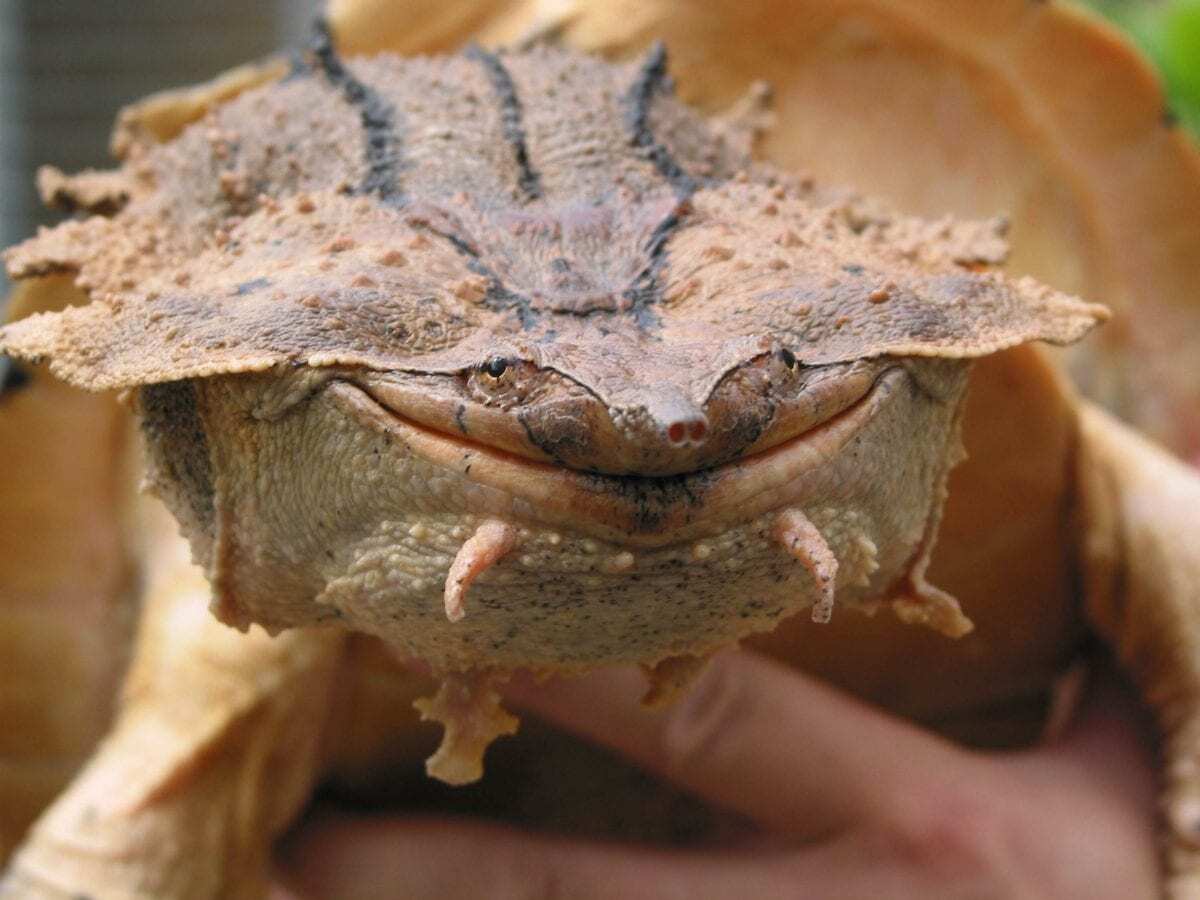

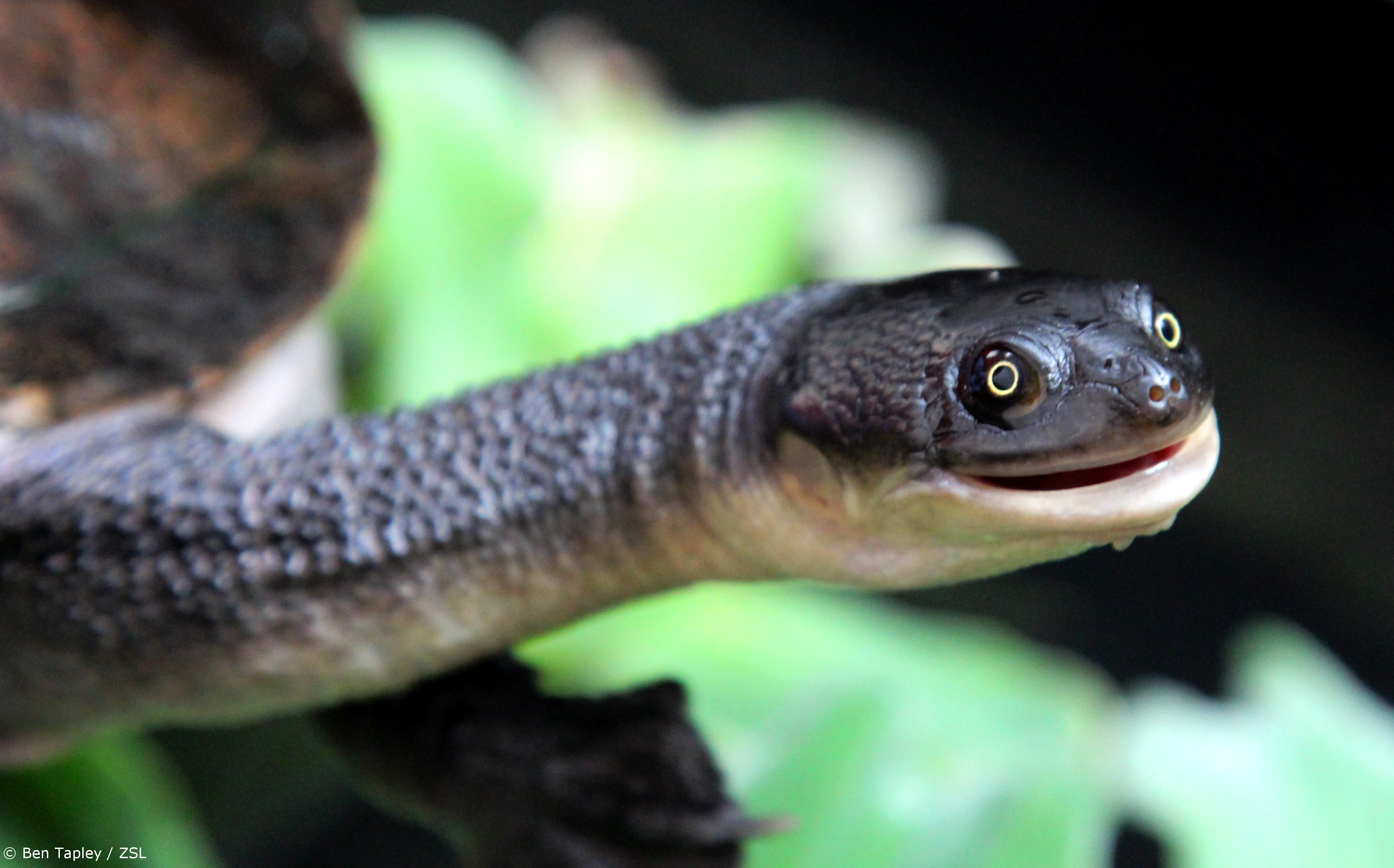




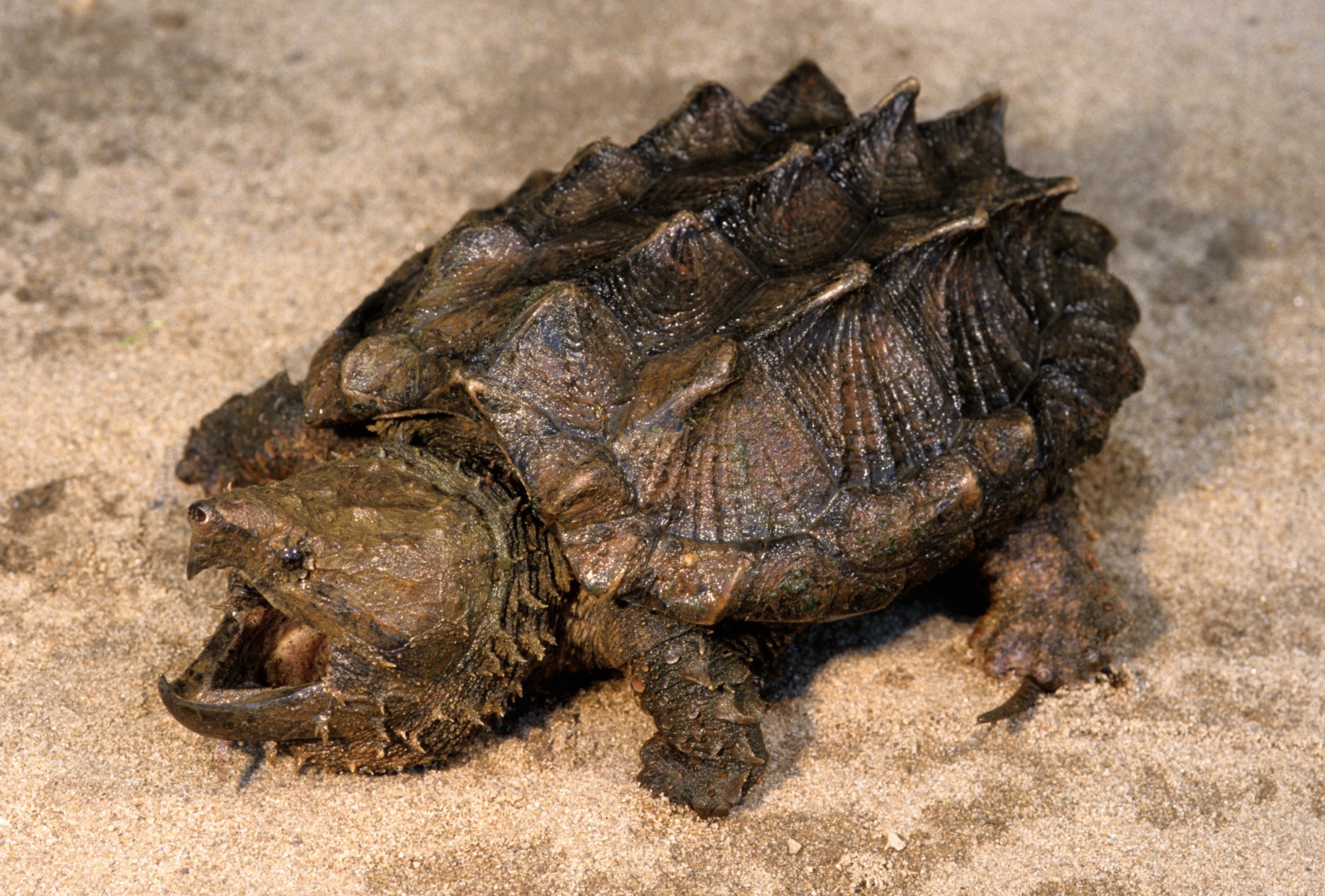


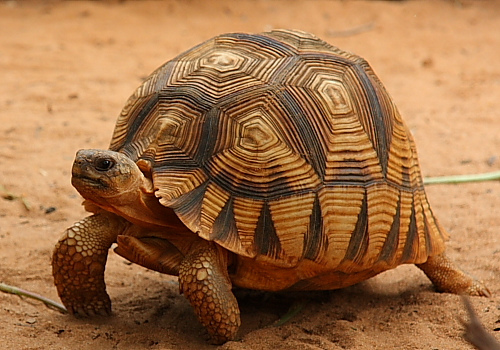
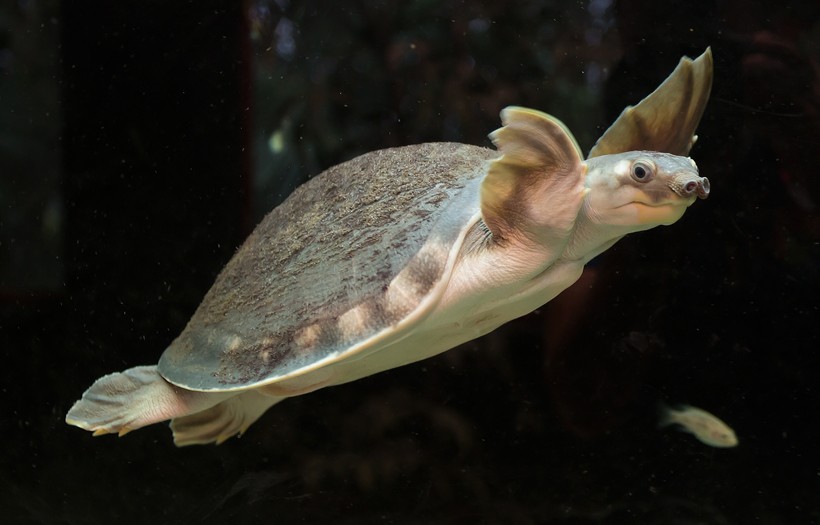




No comments:
Post a Comment